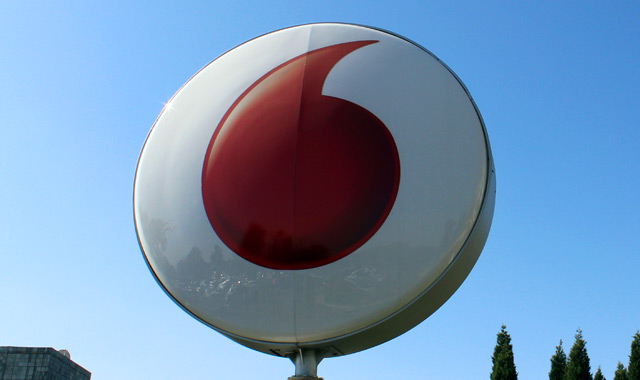 Annual reports are far more useful than establishing what a chief executive earned a year ago. Nevertheless, that’s about all the attention these documents get these days from journalists (mostly from wire services, given the steep cuts to most newsrooms).
Annual reports are far more useful than establishing what a chief executive earned a year ago. Nevertheless, that’s about all the attention these documents get these days from journalists (mostly from wire services, given the steep cuts to most newsrooms).
I can thank the late — great — David Carte for my habit of reading any (and every) annual report I can find. Sometimes they’re rather turgid (the tomes from the life assurers come to mind), sometimes they barely provide any more detail than the financials published on Sens, but most of the time they’re filled with insights into a company that you — by definition — can’t get anywhere else.
There’s a lot in Vodacom’s 2015 integrated report for the year to 31 March 2015 that’s fascinating and mostly not widely known. (Plus, it helps that I’m a shareholder and that I’ve covered the sector keenly for nearly a decade.)
And, while I hate “listicles” — the kind of useless collections of factoids that are a staple for sites like Business Insider and Buzzfeed — it’s a very useful format to string together 10 not-quite-related interesting bits and pieces from Vodacom’s annual report.
(These are all related to its South African operations, not the broader group which operates in Tanzania, Mozambique, the Democratic Republic of Congo and Lesotho).
1. Smartphones are only at 30% penetration
We know from its annual results presentation that Vodacom has 9,3m smartphones active on its network in South Africa, an increase of 28,4% from 31 March 2014. But, it says in its report that number “equates to only 30% penetration”. Add tablets and modems into the mix, and that number goes to 43% of active devices (compared to 32% in 2014).
2. Data has a lot more room to grow
Only marginally more than half — 51,7% — of its active customers are using data, so there is ample opportunity to grow that. Of its 16,6m data customers, 5m still use feature phones. It sold 196m data bundles in the year, more than double the amount in FY2014. Expect that number to keep rising.
3. A faster network means customers spend more
These are probably the two most fascinating numbers in the report. Stuck away in a graphic on page 41 are the impacts that faster base stations have on average revenue per user (Arpu). Upgrading coverage from 2G to 3G results in an Arpu increase of 10,8%. And, upgrading coverage from 3G to 4G/LTE results in an Arpu increase of 12,6%. This is the first time we’ve ever had locally relevant data for this.
4. Vodacom is sharing tons of sites with rivals
Vodacom says more than half of the base station sites it occupies are shared. At the end of March, it had 5 183 shared sites in the country (from 4 733 in 2014, 4 081 in 2013 and 3 646 in 2012). It doesn’t publish a total for South Africa, but simple maths shows that the number can’t be over 10 000. Most are 3G sites, given that its 3G footprint is “over 8 800” (4G/LTE nearly doubled over the past year to 2 600 sites).
5. Store revamps mean increased sales
Its project, in which it’s revamped two-thirds of its Vodacom-branded stores so far, has had a direct impact on sales. Gone on the handful of counters, with the focus now on the stores being “experiential”. Foot traffic has increased, the average waiting time has decreased by 16 minutes and Vodacom has seen a “10%-20% increase in contact connections and upgrades with prepaid connections up even stronger”.
6. More My Vodacom app usage = less queries to call centres
Vodacom says its My Vodacom app (effectively a version of parent Vodafone’s My Vodafone app — and not the greatest implementation) has been downloaded more than 2,4m times.
It says the number of My Vodacom app logins “increased from 340 000 to 1,1m (up by 223%), which correlates to a 10% reduction in calls to call centres. We don’t know if that’s monthly (I’d assume so). App users (actual people, not their logins) increased by 52% over the past year. It doesn’t disclose numbers, but I’d imagine active users are likely in the low-to-mid hundred thousands.

7. It’s done well to cut electricity consumption … sort of
Vodacom has been reducing the amount of electricity consumed by its core network and its buildings (but not by its access network) since 2011. In fact, across those four years, it’s cut the amount of electricity used by its buildings by over 40% (from 101,8GWh in 2011 to 59GWh last year). A major contributor to this has been the installation of a heating, ventilation and air conditioning (HVAC) plant and solar array at its offices in Century City in late 2013. It says this installation aims to reduce electricity consumption by about 52 166kWh/month with an annual cost saving of nearly R1m. Its access network (effectively its base stations) is becoming significantly more power hungry. In FY2015, it consumed 255GWh of electricity, a 19% increase on the prior year.
8. Interconnect cuts are no longer consequential
The mobile termination rate reductions forced by communications regulator Icasa have been brutal in the speed and their quantum. At 20c/minute currently, they are barely higher than termination rates in Kenya (and are among the lowest among Vodafone’s operations in nearly two dozen countries — but that’s a story for another day). Interconnect reductions have knocked service revenue and earnings growth over the past four years. But, Vodacom says “interconnect revenue now contributes less than 5% of service revenue in South Africa, so the impact going forward of further reductions in MTRs will be significantly less”.
9. Vodacom is (quietly) running a rather tidy insurance business
The operator says its insurance portfolio (mostly device insurance) has been growing steadily, generating revenue of approximately R441m” (a 36% increase on a year ago). On average, it says the “device insurance business processes approximately R1m in claims per working day”. It says only 7% of its contract customers “currently have device insurance” with Vodacom. Its subsequent transfer (from underwriter Mutual & Federal) of the insurance book for the Nashua Mobile customers it bought when that business elected to wind itself up will no doubt contribute to a meaningful increase in its insurance revenue this year. Any bets on this being a R1bn business by 31 March next year?
10. Vodacom pays a lot of tax
While its done a fairly good job of making this document “difficult to find” — what it calls “Our contribution to public finances” — its 2015 tax bill in South Africa totalled R9bn, and looks something like this:
- Direct tax (exactly what it says, including excise and municipal tax): R5bn billion for the entity that has a telecoms licence and R172m for other legal entities in the group
- Indirect tax (PAYE, VAT, etc): R3,7bn for the main entity and R138m for the others
Interestingly, its tax bill is around R500 million lower than it was in 2014 (and profits weren’t that much lower).
These figures don’t include what it terms “direct non-tax contribution”, which is things like spectrum fees, regulatory/licence fees, universal service levies and interconnect fees. Here, the total bill was R249m in South Africa (from R416m a year prior).
There’s (at least) one more nugget buried deep in Vodacom’s 2015 annual report. But that deserves some attention of its own, later this week.
- Hilton Tarrant works at immedia, specialists in native mobile app and Web development. He owns shares in Vodacom, first purchased in June 2013
- This column was first published on Moneyweb and is republished here with permission




